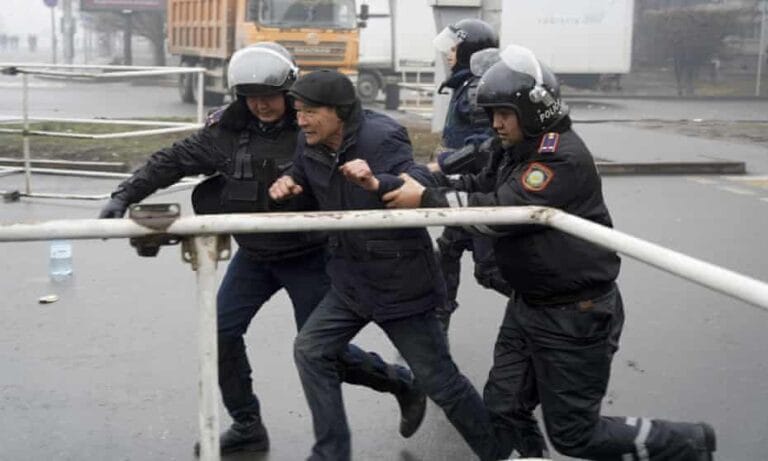Official figures indicate that at least 164 people died and 8,000 have been arrested after Kazakhstan’s President told his troops to ‘shoot protestors without warning’.
The protests started in the town of Zhanaozen after a doubling of gas prices. The same town was the scene of the massacre of 14 striking workers in 2011. The then President, Nursultan Nazarbayev, and his family control much of the national wealth of the country.
Kazakhstan has the largest proven oil reserves in the Caspian Sea region, producing about 1.1 million barrels a day of crude. ExxonMobil and Chevron have pumped tens of billions of dollars into oilfields in western Kazakhstan, where the protests erupted.
Yet despite this wealth, many workers live in poverty. Nazarbayev’s son in law, however, was able to buy a mansion in Ascot from Prince Andrew’s family for £15 million. The former British Labour Party leader also asked for a £5 million fee for advising Nazarbayev on how to handle the aftermath of the murder of 14 workers.
The background of extreme inequality helps to explain the anger that fuelled the protests. Those involved demanded a reversal of the gap price rise and the removal of Nazarbayev, who continued to control the state apparatus behind the scenes.
Both these immediate objectives have been achieved – but at a terrible cost.
The same old regime, however, stays in place and will continue to balance between Russia, China and America as it uses the country’s natural resources to feather its own next.
People Before Profit has initiated a declaration of international solidarity with the workers’ movement of Kazakhstan.
